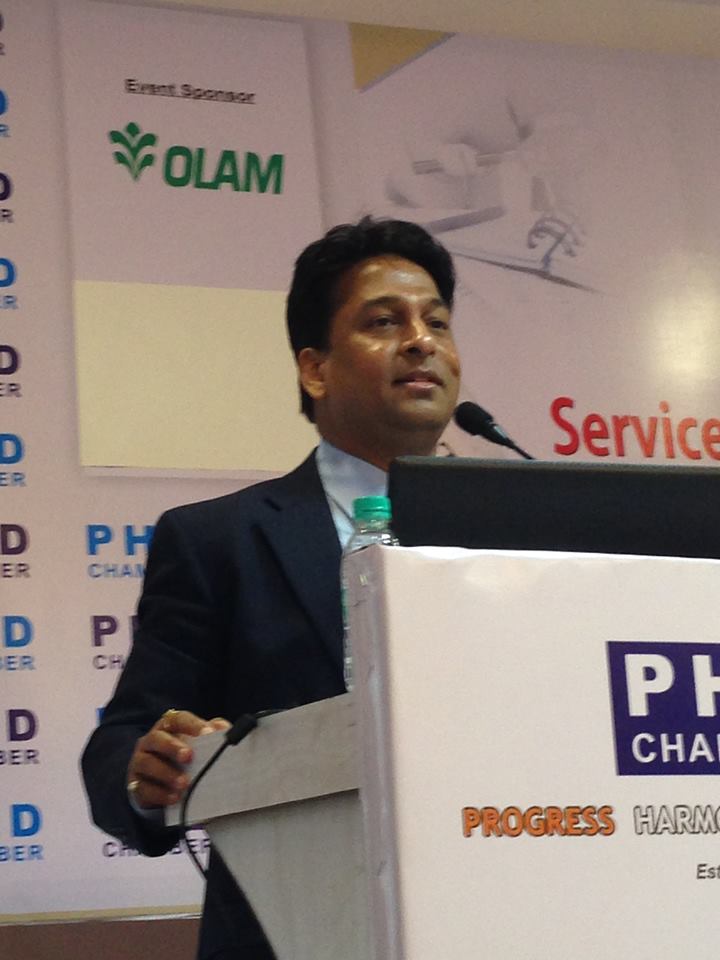| Article Section | |||||||||||
|
Home |
|||||||||||
Goods and Services Tax (GST) - Challenges for implementation by April 2010 |
|||||||||||
|
|||||||||||
Goods and Services Tax (GST) - Challenges for implementation by April 2010 |
|||||||||||
|
|||||||||||
To start with I am highlighting a quotation of Kautilya quoted by the Hon'ble Finance Minister in his Budget 2009 speech that "In the interest of the prosperity of the country, a King shall be diligent in foreseeing the possibility of calamities, try to avert them before they arise, overcome those which happen, remove all obstructions to economic activity and prevent loss of revenue to the state" in the context of welcome announcement made for introduction of the Goods and Services Tax (GST) with effect from 1st April, 2010 and the broad contour of the GST Model announced will be a dual GST comprising of a Central GST and a State GST. The Centre and the States will each legislate, levy and administer the Central GST and State GST, respectively and promise made by the Hon'ble Finance Minister that "he will reinforce the Central Government's catalytic role to facilitate the introduction of GST by 1st April, 2010 after due consultations with all stakeholders". The GST is a simple broad-based form of taxation which will provide the requisite stimulus to the economy during economic slowdown worldwide and unified tax system is a necessary condition for a common market to exists, this permits free and unimpeded movement of goods and services across a federation, thus encouraging efficient regional specialization. Such harmonization will significantly reduce the vertical imbalance between the Centre and the states by enhancing the tax base of the states. India is all set to enter into the era of new tax called GST with over 140 developed nations of the world. It is going to be the biggest ever tax reform in India. Further the GST being a comprehensive tax, should prima facie subsumed all other indirect taxes such as Excise duty, Service tax, Central Sales Tax (CST), State-level Sales tax/ VAT, Octroi/ Entry tax, stamp duty, telecom license fees, turnover tax, tax on consumption or sale of electricity, taxes on transportation of goods and services, etc., thus avoiding multiple layers of taxations that currently existing in India. And it would be levied on manufacture and sale of goods and services at a national level through a tax credit mechanism i.e. tax is collected on value-added goods and services at each stage of sale or purchase in the supply chain and allows the set-off of GST paid on the procurement of goods and services against the GST which is payable on the supply of goods or services. However the end consumer bears this tax as he is the last person in the supply chain. The GST should consist of following principles: · Uniform rate of taxation within a specified and given jurisdiction. · Sales would be taxed under the destination based principle. · Low costs of compliance and administration. · A substantively common tax base for Central and state governments. · Substantial Co-operation in tax administration between all levels of government. Now let me highlight the importance in quotation of Kautilya as quoted by our Hon'ble Finance Minister to address following challenges diligently in effective implementation of the GST by April 2010 as there is less than 9 months to elapse now and no roadmap or White paper is published as yet for Trade and Industry to adapt to the basic frame work decided in principle by the empowered committee of State Finance Ministers: Challenges to address: · Integration of a large number of Central & State Taxes - multiplicity of taxes and tax rates. · Will GST would be multi point levy or levy at final consumptions. · Power to levy and collect taxes - necessary constitutional amendments. · Rationalisation of thresholds and exemption limits. · Operating a seamless input credit system - no cascading. · Integrating the origin based tax with the destination based GST. · Standardisation of systems and procedures. · Efficacy and integration of broad based computerizations across the Nation. · Dispute settlement procedure and machinery. · Training of tax administrators and assessee. · Protecting and balancing the present and future revenues of the Centre and the States. · Safeguarding the interests of less developed States with lower revenue potential. · Treatment of exemption allowed in excise, VAT, etc. · Treatment of chargeability of Alcohol, tobacco, petroleum products which are likely to be out of the GST regime. · Various other issues like inter state transfer of goods, cross border taxation of services, place of taxation, timing of taxations, etc. Way Forward: We are required to take well thought of steps in implementation of GST with clear guidelines about the final approach of dual GST and need to take all the stakeholders into confidence such as State governments, trade & industry, service providers & service recipients, consumers and professionals, etc. So first step in this direction would be early release of White Paper/ Road map of dual GST adopted by the empowered committee of State Finance Ministers and to be made to the Public and kept open for detailed discussions, reconciliation and finalisations by all stakeholders.
By: Bimal jain - July 20, 2009
|
|||||||||||
| |
|||||||||||
 9911796707
9911796707

